AmmoLand Editor Jim Grant gets his hands on an exclusive early look at the all-new Taurus GX4 handgun.
U.S.A. -(AmmoLand.com)- Before the Taurus GX4, I had never owned a Taurus pistol in my entire life. If you’re wondering why it’s probably not what you think. When I first got into shooting, the gunshops around me either didn’t carry Taurus or priced them at or above guns from companies with objectively better track records for reliability. Now given, this was nearly 15 years ago, and the Taurus of the mid-2000s was plagued with quality control issues.
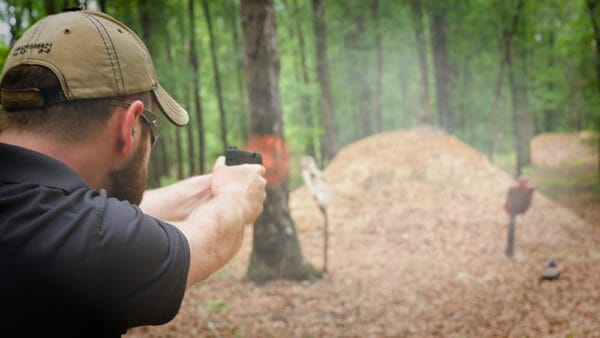
I mention this not to scare off potential buyers, but rather to give perspective on both the negativity surrounding older Taurus guns on the internet, as well as the progress made under its new CEO – Bret Vorhees. Under Vorhees, Taurus has really improved its image by producing more modern firearms at affordable prices, and by doubling down on quality assurance to make sure that customers never need to take advantage of the lifetime warranty behind the guns.

Taurus GX4 Pistol in 9mm
Manufacturer’s Specs
- Brand Taurus Arms
- Model: Taurus GX4
- UPC 725327935391
- Caliber 9MM LUGER (9X19 PARA)
- Action SEMI AUTO
- Capacity 11 ROUNDS
- Barrel Length 3.06″ BARREL
- Weight 1.1 LBS.
- Finish BLACK POLYMER
What we like? The Taurus GX4 is a striker-fired, polymer-framed locked-breech semi-automatic handgun chambered in 9mm parabellum.
It feeds from steel, stagger-column 11-round flush-fitting magazines and includes two in the box. One interesting aspect of the magazines’ design, is the extreme angle of the tapered portion of the magazine’s body at the top. Presumably, this was done to allow for a smaller slide without compromising the GX4’s magazine capacity. Despite this relatively steep angle, the follower never felt like it dragged, even when loaded to capacity.

As mentioned above, the Gx4 features a polymer frame to reduce overall weight. The GX4 only weighs 18.5oz unloaded. Additionally, the frame and slide are both dehorned for easier, cleaner draws from concealment. In contrast, the frame features selected areas covered in a molded stippling texture to ensure shooters retain control of the pistol when it’s wet or oily.
The frame also has a low-profile magazine release button and slide release to prevent snagging on clothing or holsters. This also makes the gun slide into a holster easier.
Below this, the GX4 features a flat-faced trigger with a safety blade in the center not totally dissimilar to those found on a Glock.
Taurus GX4 Ergonomics
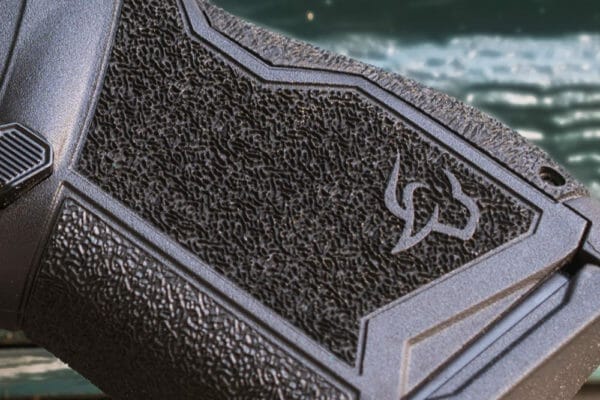
All controls on the Taurus GX4 are easy to reach for shooters of all sizes, and in testing, even my 100-pound wife, who wears a size small glove, can reach everything without having to shift her firing grip. This is partially due to the overall compact size of the gun but also the channel at the top of the grip, which reduces the length of pull of the pistol.
The trigger is very competent but not light; after all, it is a concealed carry gun that lacks a manual safety. Using a Lyman trigger scale, 25 trigger pulls averaged out to 7.3lbs. Some trigger pulls measured as little as 6.4lbs, others as high at 8lbs. But this was due to trigger finger placement and not to an inherent design flaw.
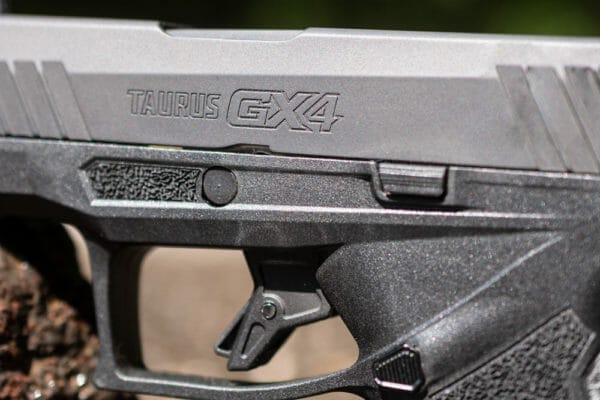
Another ergonomic concern for me on the GX4, which applies to all compact concealed carry handguns, is the bore axis of the pistol. If the barrel is too high above the grip, it gives mechanical advantage and leverage to the recoil impulse against the shooter’s grip. This, in turn, translates to additionally felt recoil. Thankfully, the GX4’s bore axis is fairly low, which helps tame the sometimes snappy recoil of 9mm ammo when fired from a compact, lightweight handgun. This is great because even though the Taurus is roughly the size of a .38 special J-Frame revolver, it has dramatically less felt recoil and more than double the capacity (Plus faster reloads.).
Reloads with the Taurus GX4 pistol were also pretty quick. So while the gun lacks a beveled magazine well, the sharp angle of the magazine bodies helps funnel the magazines into the mag-well.
Accuracy
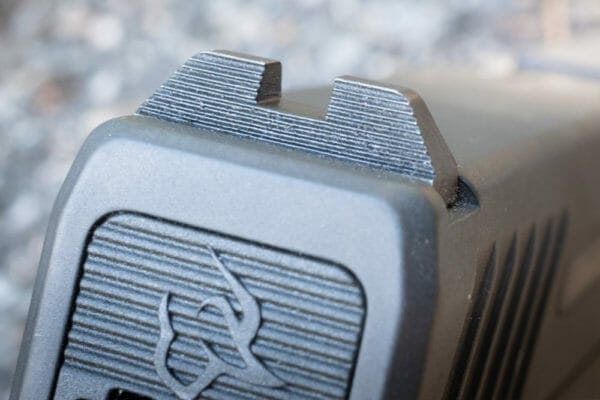
Although the GX4 only has a 3.06-inch barrel, the pistol proved surprisingly accurate – even with 115gr inexpensive FMJ. While I didn’t have enough time to do a scientific, in-depth accuracy test, the Taurus handgun never struggled to hit any targets on my range. This even includes a 12-inch steel gong at 60 yards. However, the pistol’s somewhat snappy recoil did make hammered pairs very difficult beyond 10 yards on small targets.
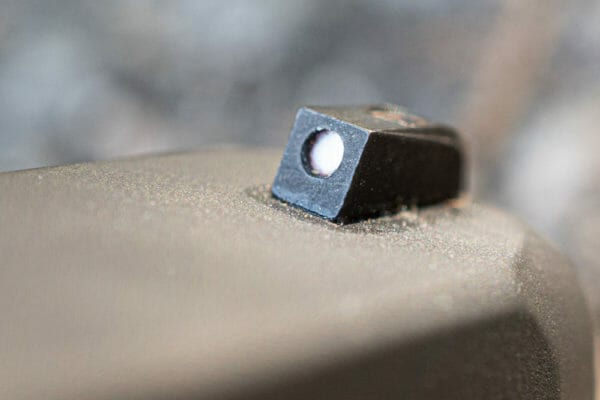
That said, man-sized targets (it is a concealed-carry pistol, after all) proved no challenge even when firing the Taurus GX4 pistol as quickly as possible at 10 yards. And I suspect the heavy break on the trigger contributed more to any difficulties I had quickly shooting than any mechanical limitation. Plus, the trigger should improve substantially after a few hundred rounds of break-ins.
GX4 Reliability
Due to my abridged time with the gun and the insane price of ammunition lately, I only put 350 rounds of ammo through the GX4. One hundred fifty of these rounds were 115gr Winchester White Box FMJ.

Additionally, 100 rounds of 124gr FMJ from Aguila was test-fired through it, as well as a mix of 135gr +P Critical Duty JHP from Hornady, 124gr HydraShok JHP from Federal, and a few 147gr JHP from Browning ammunition. In all this testing, the gun never encountered any malfunctions whatsoever. It was exactly as reliable as any high-quality concealed carry pistol should be. Overall, the gun was utterly dependable.
Under the GX4’s Hood
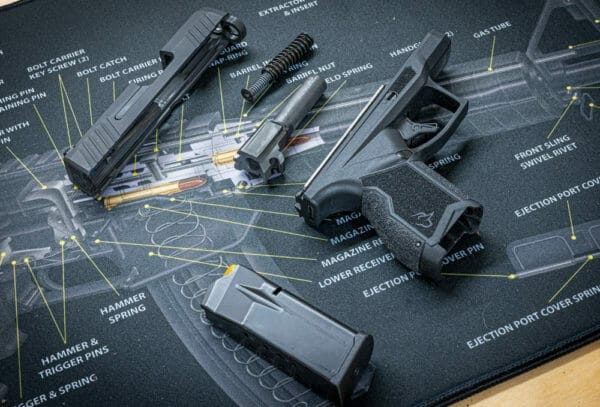
The Taurus GX4 utilizes a simple locking lug and a double, captured recoil spring for operation. Disassembly for cleaning is straightforward. A shooter simply removes the magazine, then clears the action of any cartridges before turning a disassembly lever with either a flathead screwdriver or the rim of a 9mm cartridge. Once the lever is rotated 90 degrees counter-clockwise, the slide must be gently pressed forward, and then the trigger pulled to release it from the frame.
After that, to free the recoil spring from the slide assembly, just push it towards the muzzle to relieve tension before lifting the rear up and away. The barrel comes apart much in the same way. Just slide it forward slightly to unlock it from the slide, then lift it vertically and backward away from the muzzle to remove it.
To reassemble, do the previous steps in reverse, except the takedown lever does not need to be rotated. It will rotate by itself once the slide is re-installed on the frame.
Is the Taurus GX4 Worth It?
With a strangely specific MSRP of $283.99, the GX4 is by no means an expensive handgun – especially compared to its peers.
But there are a few options I would have personally liked to see included that were absent on this original gun. For starters, I would have preferred a more visible front-sight post. Ideally, a tritium-filled one. However, that would undoubtedly raise the MSRP substantially.
The other gripe I have with the gun is its lack of an extended magazine or possibly an extended baseplate. With the stock magazines installed, the gun is still very comfortable for me – though caveat emptor – I have smaller hands. So if you’re well over six feet tall, the gun may be small for you. Thankfully, it does include an enlarged backstrap to help fill the hands of larger shooters.
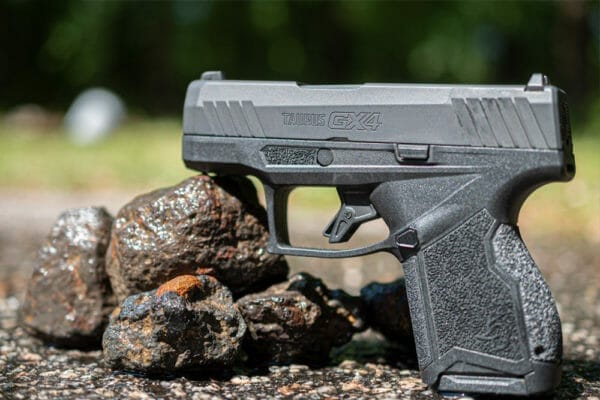
Taurus GX4 Verdict
Compact, easy-shooting, and featuring a very solid magazine capacity, the new Taurus GX4 is an excellent handgun for concealed carry. Some may scoff at the prospect of buying a handgun not made by one of the big defense companies but rest assured, if my example is any indication, the Taurus GX4 is a reliable performer and one that I wouldn’t feel under-armed carrying.
Read Related: Taurus GX4XL 9mm EDC Pistol Review ~ VIDEO
About Jim Grant
Jim is one of the elite editors for AmmoLand.com, who in addition to his mastery of prose, can wield a camera with expert finesse. He loves anything and everything guns but holds firearms from the Cold War in a special place in his heart.
When he’s not reviewing guns or shooting for fun and competition, Jim can be found hiking and hunting with his wife Kimberly, and their dog Peanut in the South Carolina low country.


